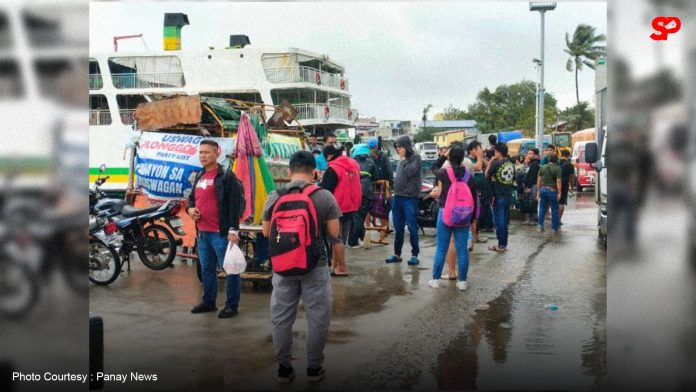By Xander Ledesma
Following the passage of Tropical Storm Kristine, maritime travel across Region 6 has returned to normal. The Philippine Coast Guard (PCG) lifted the two-day suspension of sea voyages early Friday morning, signaling the resumption of operations for all vessels. This comes after the storm cleared the Philippine Area of Responsibility (PAR), allowing maritime activities to continue, albeit with certain restrictions.
As of 5 a.m. on Friday, the PCG Iloilo station reported that while most of Iloilo was no longer under storm signals, the northwestern parts of the province—including Lambunao, Calinog, Bingawan, Janiuay, and Passi City—remained under Tropical Cyclone Wind Signal No. 1. In adherence to safety protocols outlined in the HPCG Memo Circular No. 03-01, vessels weighing 250 gross tons and below are still prohibited from sailing until further notice.
Commander Jan Terazona of PCG-Iloilo later confirmed that by 11 a.m. the storm had fully exited the country, and Iloilo was free of Gale Warnings or storm signals. This clearance allowed sea routes between Iloilo and neighboring provinces—such as Negros Occidental, Cebu, Cagayan de Oro, and Manila—to resume. Additionally, the voyages of fiber boats between Iloilo City and Guimaras were also restored.
Despite the improvement in weather conditions, the PCG continues to urge vessel operators and the public to maintain heightened vigilance. Commander Terazona emphasized that while the storm has passed, safety precautions remain crucial, especially for smaller vessels and those operating in areas with fluctuating weather patterns.
Tropical storms like Kristine frequently disrupt sea travel in the Philippines, a nation comprising over 7,600 islands where maritime transport is vital for both daily commuting and cargo movement. The disruption caused by these storms highlights the vulnerability of the Philippines to weather-related calamities. According to the Philippine Atmospheric, Geophysical, and Astronomical Services Administration (PAGASA), the country experiences an average of 20 typhoons annually, with around eight or nine making landfall. The necessity for strict maritime regulations during storms is underscored by the archipelago’s frequent encounters with powerful tropical storms, ensuring the safety of both passengers and cargo.
The swift restoration of maritime services is crucial not only for the movement of people but also for the economy, as many businesses rely on sea routes to transport goods. However, as the country continues to deal with climate-induced natural disasters, there is an increasing demand for improved disaster preparedness and resilient infrastructure, including port facilities and weather monitoring systems.
As the Philippines enters the last quarter of the year—a period notorious for its frequent and intense storms—the focus remains on ensuring that safety measures are enforced to prevent casualties and property damage, particularly in regions prone to flooding and heavy rainfall.
With the PCG’s guidance and regular updates, maritime safety remains a top priority as the country faces recurring natural calamities, exemplifying the importance of preparedness in a nation where weather can quickly change the course of daily life.

